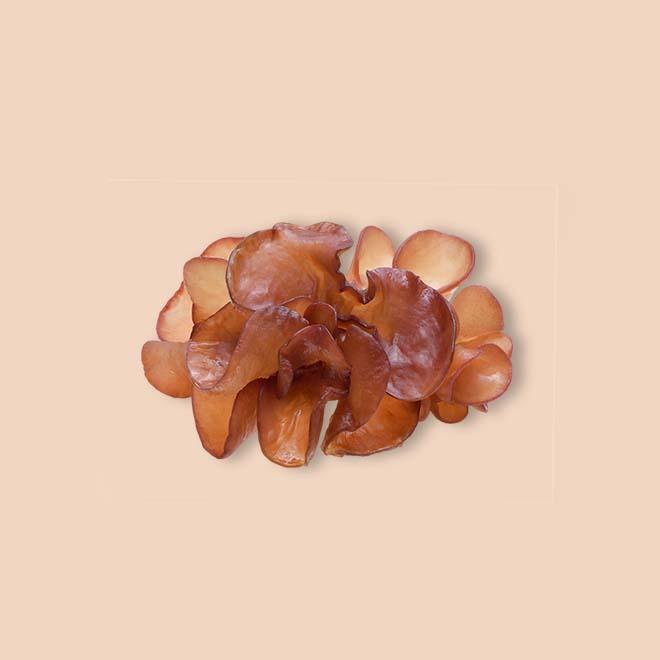Wood Ear Mushroom




Wood ear mushrooms are small, dark brown (sometimes black) mushrooms, commonly used in Asian cuisine. Their texture is gelatinous and rubbery when fresh and slightly crisp when dried. Popular in Asian cuisine, they're often stir-fried, added to soups, or included in hot and sour dishes.
The common wood ear's scientific name (Auricularia auricula-judae) translates to "ear of Judas," referencing a Christian legend associating its shape with the betrayal of Jesus by Judas Iscariot. This name persisted in parts of Europe, adding a layer of symbolic intrigue to the humble fungus.
Even though wood ear mushrooms commonly grow on elder trees, beech, oak, and other hardwoods, when buying them in a store choose fresh wood ears with a deep brown or even black color.
Avoid any specimens with pale or faded hues, as these might be old or past their prime. They should feel firm and rubbery and not overly slimy or mushy. They can be often found in Asian grocery stores in both fresh and dried varieties.
Fresh wood ear mushrooms can last for up to 5 days in a refrigerator when stored properly and wrapped in a damp paper towel. Dried wood ear mushrooms can last for up to several months when stored in an airtight container in a dark and cool place.
Extract vibrant purple and brown dyes from wood ears using simple techniques like simmering them in water with vinegar or alum. These natural dyes can be used to color fabrics, yarn, or even wood, creating unique and eco-friendly crafts.
Their intricate shapes and rubbery texture make them ideal for crafting. Dried wood ears can be woven into baskets and mats, glued onto surfaces for mosaics, or even fashioned into miniature decorative objects.
In some regions, dried wood ears are stretched into membranes and used to create unique drums and tambourines.
In Chinese lion dances, the mane and beard of the lion are traditionally made from dyed wood ears. Their flowing texture and vibrant colors contribute to the visual spectacle of the dance.
Gently rinse the fresh wood ear mushrooms under running water to remove any dirt or debris. Don't soak them for too long, as they can absorb water and lose their chewy texture.
Briefly boil the mushrooms for 2-3 minutes to soften their texture and remove any bitterness. This is particularly helpful for larger or older wood ears. If stir-frying, add them to your stir-fry towards the end of cooking, as they cook quickly.
Before using dried wood ears, soak them in warm water for about 30 minutes or until softened and pliable. Discard any cloudy or discolored water after soaking. Dried wood ears can be ground into a powder and used as a flavorful spice in various dishes.
Wood ear mushrooms are low in calories and fat but offer a good source of dietary fiber, vitamin B1, vitamin B2, and other micronutrients.
Research indicates that wood ear mushrooms contain various antioxidants while certain compounds in wood ear mushrooms may stimulate the immune system and activate immune cells.
Corrections or improvements? Email us at
content@sidechef.com